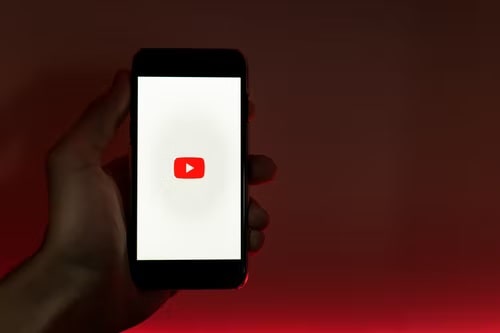Blog

Social media including TikTok has played a major part in the war in Ukraine, with both sides using the medium to spread their message (and in Russia’s case, propaganda), among their citizenry and the world. Ukraine, under the charismatic leadership of President Volodymyr Zelenskyy, has galvanized world opinion and moved global leaders to take action with an effective social media campaign.
This war is different due to the number of people with smartphones actively using social media platforms and watching the conflict unfold via high-quality video. Generational factors, such as the number of digital natives using social media, are impacting how we view the nature of war, “especially Gen Z-ers, who spend 8-plus hours a day online.” The use of social media during this conflict is changing the nature of how wars are fought, and CNN has even dubbed this conflict the “TikTok War.”
These trends have ramifications on how this war will be fought on the battlefield and gives us an opportunity for a dialogue and to support the brave Ukrainians risking their lives for their homeland.
Leadership and the use of social media
On the one hand we see Ukrainian President Volodymyr Zelenskyy, who has a clear understanding of how to get a message out. He has inspired the world with his consistent video blogging and has galvanized his people in defense of their country.
Without a charismatic leader (who was not taken seriously by the West before this crisis), this resistance may well have faltered. If Zelenskyy had fled, as many politicians might have been expected to, the resistance may have crumbled. One man, with the use of a camera and access to social media is changing the tide of history… and this time for the positive.
He continues to lead Ukraine’s resistance and communicate with world leaders through social media and uses those platforms to counter Russian propaganda.
An ineffective example of the use of social media is by the Chechen warlord and human rights abuser Ramzan Kadyrov. Kadyrov, who has traveled to Ukraine at the behest of Vladimir Putin, has built a social media persona which borders on the bizarre. Images range from him leading his paramilitary unit (wearing the infamous Prada boots that were trolled over social media), to images with cuddly pets, to standard images of him keeping Islamic traditions. His Instagram account is detached from reality and authenticity, which already adds to his lack of credibility, particularly as he throws his hat into the Elon Musk-Putin challenge.
Seeing the war unfold online
Platforms such as TikTok have enabled users to experience a raw and unfiltered view of the war from the perspective of the Ukrainians fighting it. Many young people on the front lines are sharing their experiences. While Gen Z and millennials may be self-deprecating in their storytelling (and may make light of the situation), the images are appalling and tragic.
In addition, those fighting on the front lines have shown images of Ukrainian civilians staring down Russian tanks, along with images of downed Russian jets. The challenge online is what is real and what is not, as some of the images may in fact be manufactured for use as misinformation and then picked up by Western media. We want to see the truth, but some propaganda is expected in the overall war effort.
Big Tech and the war
Countries such as Russia and China fully understand that images and videos on social media can stir public sentiment against the regimes. While both countries are known for censoring platforms such as Facebook and WeChat (in China), Russia has taken to banning Facebook outright.
As this article covers, when Facebook decided to limit some of the Russian propaganda on the platform, Russia canceled them: “The clarification comes after Russia opened a criminal inquiry into Meta on Friday because of the change in its hate speech policy, and after the country restricted users’ access to Instagram. Russia blocked Facebook on the heels of the invasion after the platform put limits on government-affiliated media outlets.”
Granted, Big Tech social media companies have a tremendous amount of influence and can pick and choose whom they censor. Example – the ayatollahs in Iran can freely tweet hateful and apocalyptic rhetoric while a former US president is still banned on Twitter.
Banning Facebook is another step the Russian government is taking to limit free speech and silence opposing views to the war, but it is a dangerous game on Putin’s part to fight Big Tech.
What can we do?
Educating ourselves on this trend is a good place to start. LikeWar, a book on the topic of social media and war is a particularly relevant read given Russia’s use of propaganda during their war on Ukraine (Russia’s strategy is covered extensively in the book).
Supporting Ukraine by sharing posts in your network from credible sources can help fight misinformation. Additionally, reporting fake news and propaganda to social media sites is a way to fight Russia’s misinformation machine. Donating to charities to aid Ukrainian refugees is another way.
These are uncertain times and social media is playing a central role in documenting this period as we live through history. Though Russia is weaponizing social media as a tool of propaganda, what we see happening on the ground challenges those lies. In paraphrasing the famous quote, we cannot let “truth” be the first casualty of war.

